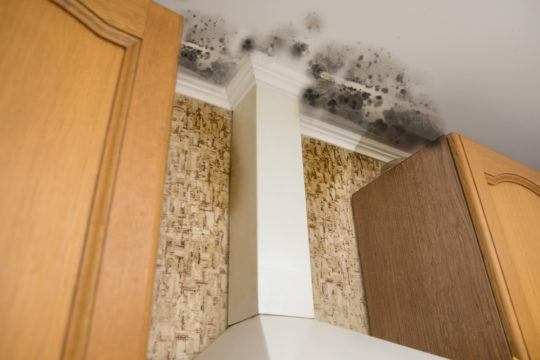Damp is the silent cause of numerous health issues, especially for the children. Dampness usually occurs in homes lacking inappropriate heating, ventilation and insulation. Damp related problems usually surface in the winter due to the extreme cold weather.
Damp develops over time if left unnoticed it will develop into a costly issue to resolve with severe impact on health. In this article, we shall explore how to recognise signs of damp, the effect of damp on our health and how to protect our homes against damp.

Recognising Signs of Damp in Your Home
It is always best to check for damp in your home from time to time as damp is an issue which develops gradually, its signs becoming visible over time. The following signs are a giveaway, indicating whether your home suffers from damp:
- a damp musty smell
- dark or discoloured patches appearing on walls and plaster
- walls, floors and ceilings feeling cold and damp
- bubbled or peeling plaster
- appearance of mould on walls, ceiling or floors
- Peeling floor tiles
- Excessive condensation on walls and windows
It is best to regularly check the walls, floor and ceiling for signs of damp. If you are worried, it is always best to call on the expertise of surveyors who will check for signs of damp inside and outside your home. They will assess the type of damp and the cause and offer advice on how to resolve the issue.
How to Deal with Damp
An easy way to minimize or prevent indoor mould is to keep your home adequately heated especially in the winter. With the rising fuel costs it is particularly important that you ensure your home is properly insulated, this will reduce air humidity levels and condensation keeping damp at bay. Furnace can be one of the solutions that can help with this problem, also this furnace buying guide might help you make an informed decision while choosing the right furnace for your home. In this article, we shall explore how to recognize signs of damp, the effect of damp on our health and how to protect our homes against damp. Another easy way of protecting your home from damp is to install adequate ventilation in wet areas such as bathrooms and wet rooms, as well as the kitchen and laundry room. This will ensure the circulation of air, reducing humidity levels. It is also very important to check for any external water leaks from drain pipes. Any damage to the external surfaces of the house such as a hole in the roof, the walls, windows, skylights can provide access for the seepage of water, giving rise to damp related issues. The external surfaces of your house should be damp-proof. If damp has taken hold in your home, you may see dark patches of mould on hard surfaces, it is best to remove this mould by using a sugar soap solution; if the patches persist then using bleach will help. This is not a long term solution; you must identify the cause of the damp and deal with it to prevent the issue from growing. You may need to replace, curtains, carpets or furniture which are made from absorbent materials as these are more likely to retain mould spores. In severe cases, you must call on the expert commercial damp proofing and remediation services to make your property damp, safe creating a safe environment for you and your family. It is vital that we protect our homes from damp; it is not only harmful to our homes but also our health. Checking our home regularly for damp can ensure a safe environment for everyone and also prevent costly remediation work..
Damp Related Health Issues
According to the NHS, damp issues in the home increase the likelihood of respiratory problems, respiratory infections, allergies and asthma. They also warn that damp and mould adversely affects the immune system.
Moulds can produce allergens, irritants and toxic substances. Inhaling damp mould fragment or spores inflames the sinus air passages causing nasal congestion, wheezing and coughing, runny nose, red eyes, skin rash and throat irritation. Prolonged exposure to damp could result in chronic health issues such as asthma and other respiratory infections.
NHS has warned that some people are more sensitive than others and should keep away from damp and mould:
- babies and children
- the elderly
- people already suffering from respiratory problems, such as allergies and asthma
- people already suffering from skin problems, such as eczema and dermatitis
- people undergoing chemotherapy, with an already weakened immune system
Many children suffer from coughs and colds during the winter months but these could be exacerbated by the presence of damp in the home. If children are continually exposed to damp conditions and mould, these common coughs and colds have the potential to develop into more chronic issues.
Mould has the potential to affect everyone’s health; it exacerbates already existing health issues but can cause healthy people to become ill.


















